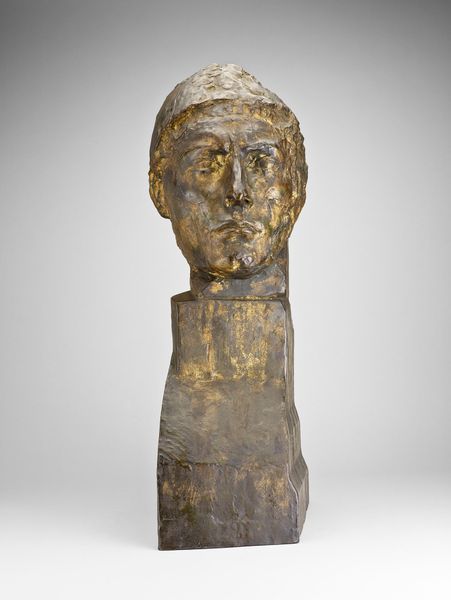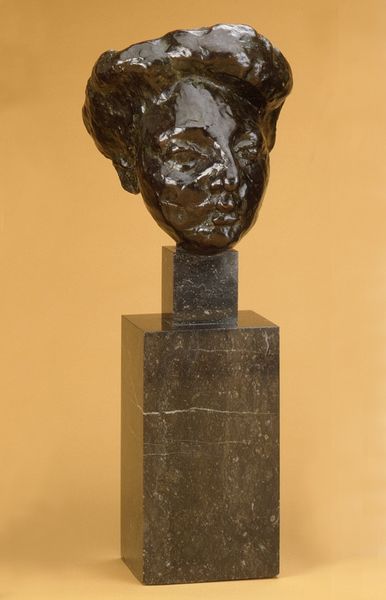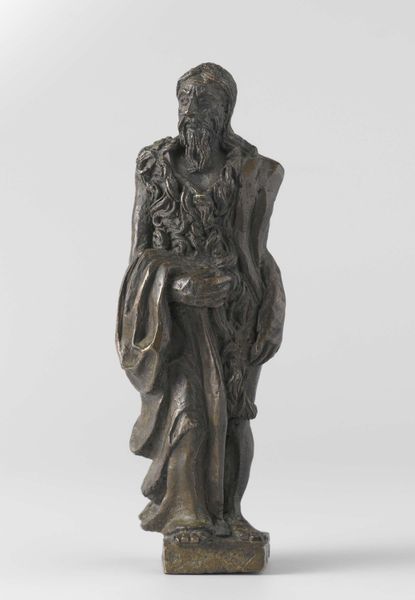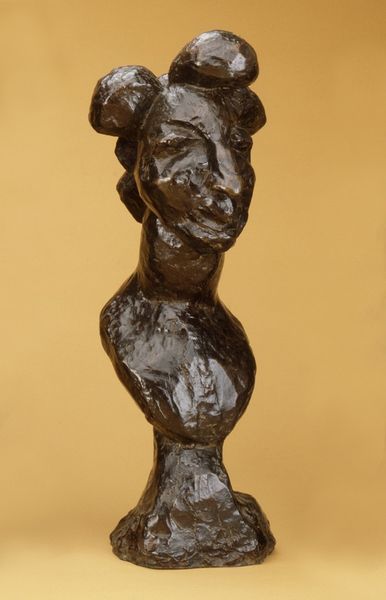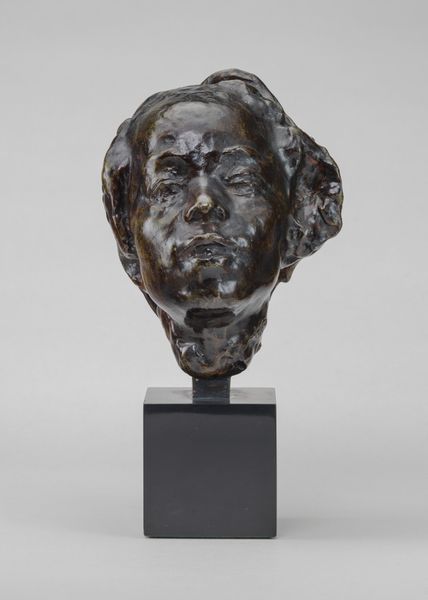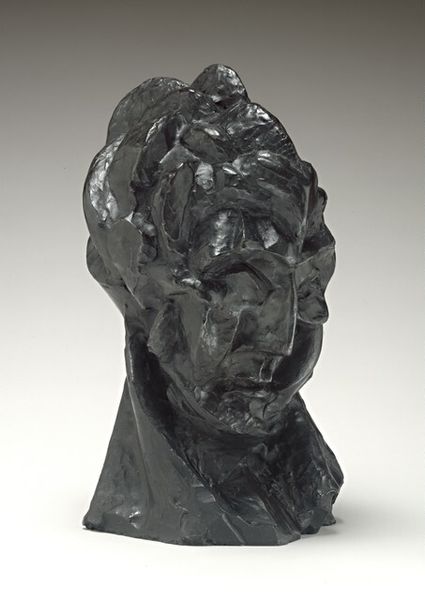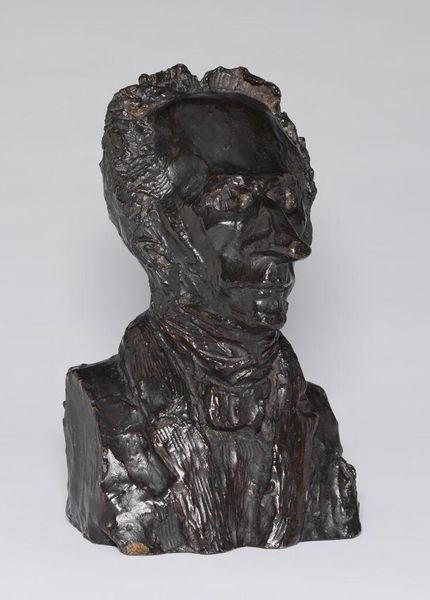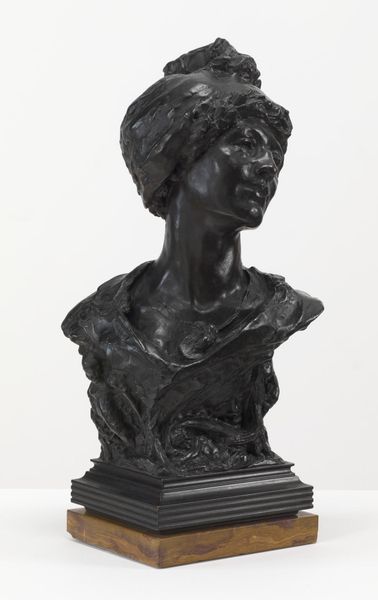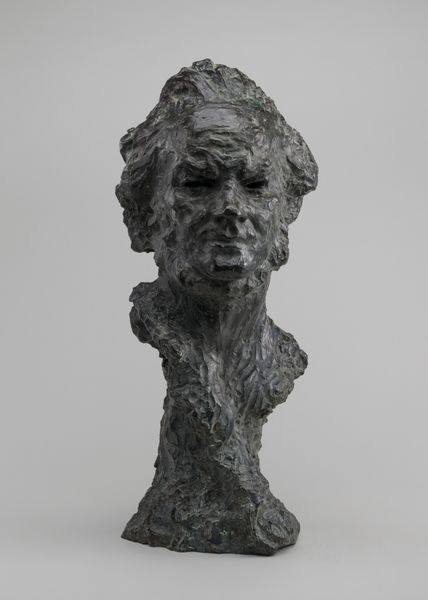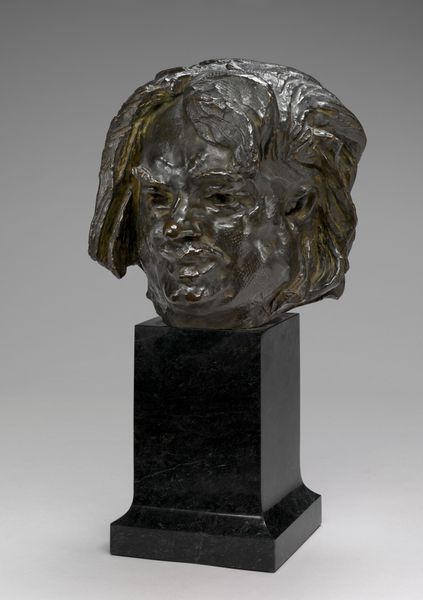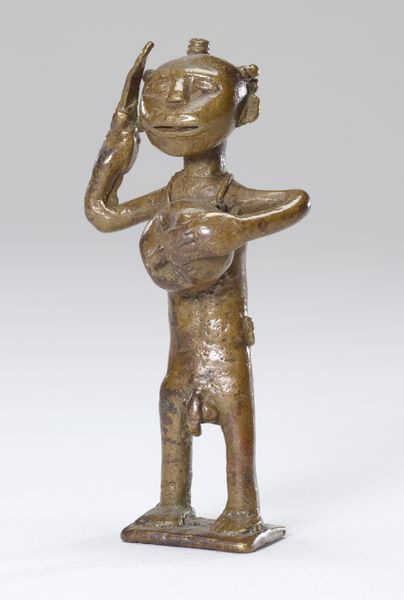
bronze, sculpture
#
portrait
#
sculpture
#
bronze
#
sculpture
#
realism
Dimensions: 10 3/8 x 5 1/4 x 4 in. (26.4 x 13.3 x 10.2 cm)
Copyright: Public Domain
Curator: Here we have Frederic Remington's "The Sergeant," a bronze sculpture realized sometime between 1904 and 1938. Editor: He looks so weary. There's a heaviness to the brow and the set of his jaw, even with the wide brimmed hat. It suggests a life lived outdoors, under a harsh sun, maybe on horseback for days at a time. Curator: Remington was fascinated by the West and its perceived heroes. This work continues his examination of the figures populating that cultural imagination. How does the piece speak to contemporary audiences, particularly when considering military power? Editor: I think we have to look at it in light of American imperialism, right? Manifest Destiny romanticized. This man probably saw conflict. What part did he play in westward expansion? Who suffered for it? Was it achieved justly? The weight of the face isn’t just hardship, maybe it's guilt? Curator: The sculpture certainly invites questions about the role of the military in American expansion, often glossed over or presented through a skewed, sanitized perspective in public memory. The artist sculpted “The Sergeant” with very visible brushstrokes and left intentional indentations. How might the treatment of the bronze change our reading of the work? Editor: Well, I feel like those imperfections work in its favor! By calling attention to his methods, it makes the piece feel more raw. His face tells more of the truth. It reminds you this wasn’t as easy or sanitized as we would like to imagine it was. It forces you to sit with a narrative, even if uncomfortable. The bronze makes him iconic, but the modeling lets the humanity shine. Curator: Exactly. This sculpture embodies complex ideas about power, conflict, and identity that still resonate in the American narrative today. Editor: Yes. It forces a reckoning with a mythologized past.
Comments
No comments
Be the first to comment and join the conversation on the ultimate creative platform.
